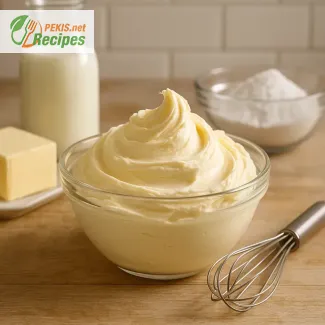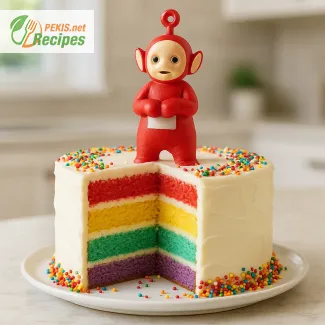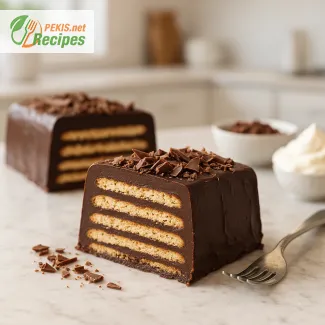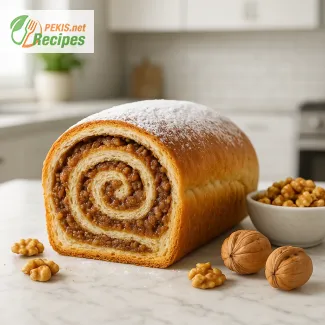
The Perfect Creamy Buttercream for Decorating Every Cake
Discover the secret to a fluffy, smooth frosting that makes cakes unforgettable
When it comes to creating visually stunning and delicious cakes, the right buttercream frosting makes all the difference. Whether you're preparing a birthday cake, wedding dessert, or simply indulging in a baking day at home, a silky, easy-to-make buttercream is the essential finishing touch. With its luxuriously smooth texture, rich flavor, and ability to hold shapes for piping and layering, this type of frosting remains a top choice for bakers of all levels. In this guide, we’ll explore what makes a great buttercream frosting for cake decorating, what to look out for during preparation, and why this classic cream never goes out of style.
There’s a reason why buttercream frosting is so beloved in both professional bakeries and home kitchens. Its balance of creaminess, sweetness, and versatility allows it to serve not just as a covering, but as a work of edible art. It pairs beautifully with a wide range of cake bases—vanilla, chocolate, red velvet, or even more modern flavors like matcha or espresso. Whether you're going for rustic swirls or detailed rosettes, buttercream provides the perfect structure and consistency to bring your vision to life.
Unlike fondant, which can sometimes feel too firm or overly sweet, buttercream offers a melt-in-the-mouth experience while still holding its decorative shape. It can be easily tinted with food coloring, infused with flavors like vanilla extract, lemon zest, or cocoa powder, and adjusted for consistency, making it the most customizable cake frosting available. It’s also the ideal foundation for sprinkles, edible glitter, fruit slices, and floral arrangements, all of which enhance the overall look and taste of your cake.
Why this buttercream recipe stands out
Among countless recipes online, it’s easy to get lost in a sea of options. But what truly sets this one apart is its simplicity and reliability. This easy buttercream frosting recipe for cake decorating was developed to ensure consistent results every single time. Using only a few pantry staples—unsalted butter, powdered sugar, cream or milk, and a touch of vanilla—this recipe yields a frosting that’s light, not overly sweet, and easy to spread or pipe. The balance between the fat from the butter and the sweetness of the sugar results in a taste and texture that complements any cake without overpowering it.
This buttercream recipe doesn’t require advanced culinary skills or specialized tools. Whether you’re using a handheld mixer or a stand mixer, the process remains straightforward and manageable. The frosting can be used immediately, refrigerated for later, or even frozen, making it ideal for busy schedules or large event preparations.
Texture, flavor, and color – the holy trinity of frosting
A good cake decorating cream should offer more than just sweetness. The texture needs to be airy yet stable, allowing for clean application and beautiful shapes. The flavor should be indulgent but balanced, acting as a harmonious component of the dessert rather than stealing the show. This buttercream achieves exactly that—it spreads like silk and tastes like a soft, buttery cloud kissed with sugar.
In terms of aesthetics, buttercream is a dream to work with. From soft pastels to bold, vibrant hues, you can dye this frosting to match any event or theme. Its neutral base makes it receptive to natural colors derived from fruit purées or plant-based powders as well as synthetic gels. Want to make an ombré layer cake? A unicorn cupcake swirl? A realistic floral bouquet? This buttercream is your go-to canvas.
Ideal for beginners and expert decorators alike
Whether you’re trying your hand at cake decorating for the first time or you're a seasoned pro perfecting your piping techniques, this buttercream provides a dependable medium. Beginners will appreciate its forgiving texture, while experienced bakers will love the sharpness and definition it allows in advanced decorations like ruffles, lacework, or even intricate portraits.
One of the most important aspects of cake decorating is timing, and this recipe gives you flexibility. It’s stable enough to work with over several hours, which is essential when crafting elaborate designs. The frosting doesn't crust too quickly, so you can make adjustments, blend shades, or smooth surfaces without stress.
Great for all occasions – and all cake styles
This frosting isn’t just for birthday cakes. Its neutral base and customizable flavor allow it to pair with everything from elegant wedding cakes to fun kids’ cupcakes, from classic layered sponges to trendy drip cakes. The ability to adjust consistency also means it can double as a filling between cake layers, a crumb coat, or a fluffy topping for cupcakes and cookies.
Hosting a tea party? Planning a shower? Preparing a bake sale? This buttercream will become your go-to companion. You’ll love how it spreads effortlessly across cake layers or how it pipes perfect swirls and rosettes.
A classic recipe that never fails
Some culinary trends come and go, but a well-made buttercream frosting for decorating cakes remains a timeless essential. It’s the kind of recipe that gets passed down, shared, and saved in family cookbooks. It’s a foundational skill for any baker and one that rewards precision, patience, and creativity.
This buttercream isn’t just frosting—it’s the finishing flourish that turns a simple cake into something truly unforgettable. From intimate family dinners to large-scale celebrations, the right frosting makes every cake feel special. And with this easy buttercream frosting recipe, perfection is just a few steps away.
- Remove the unsalted butter from the fridge and allow it to come to room temperature (soft but not melted).
- Place the butter in a large mixing bowl and beat it with a hand or stand mixer on medium-high speed for 3–5 minutes, until it becomes pale, fluffy, and creamy.
- Gradually add the powdered sugar to the butter, about 100 g (¾ cup) at a time. Mix on low speed after each addition to prevent the sugar from flying out of the bowl.
- Once all the sugar is incorporated, add the milk, vanilla extract, and salt. Beat on high speed for another 2–3 minutes until the buttercream is smooth, light, and pipeable.
- If the buttercream is too thick, add a teaspoon of milk at a time until desired consistency is achieved. If it's too thin, add a few more tablespoons of powdered sugar.
- Use immediately to frost cupcakes or cakes, or store in an airtight container in the refrigerator for up to 5 days. Rewhip before use.
Creative Ways to Elevate Your Classic Buttercream Frosting
Enhance the texture, flavor, and versatility of your cake decorating cream
The traditional buttercream frosting recipe is a reliable favorite for countless bakers, but even the best classics can be refined and adapted for different needs and tastes. Whether you're aiming to intensify the flavor, create a lighter texture, or adapt it to suit specific dietary preferences, small adjustments can yield spectacular results. Exploring different ingredients, techniques, and preparation methods opens up a world of opportunities to improve your frosting and elevate your cakes from delightful to unforgettable.
The impact of quality ingredients on flavor and texture
One of the simplest and most effective ways to improve a buttercream frosting is by upgrading the quality of your ingredients. Using European-style unsalted butter, which has a higher fat content than standard varieties, results in a creamier, smoother consistency with a richer taste. The butter’s temperature also plays a significant role—slightly cool butter (not too soft) helps maintain structure while still blending smoothly with the sugar.
Opting for organic powdered sugar can reduce that overly processed sweetness, giving the buttercream a more natural profile. And when it comes to vanilla extract, using a pure, high-quality version—or even vanilla bean paste—will dramatically boost the frosting’s depth of flavor.
Flavor variations to make it your own
If you're looking to create a signature frosting, introducing additional flavors can make a big difference. A few drops of almond extract give your buttercream a more complex, nutty note. Adding a tablespoon of cocoa powder or melted dark chocolate transforms your basic buttercream into a rich chocolate variant. For a fruity twist, try mixing in freeze-dried fruit powder, such as raspberry or strawberry, which adds both flavor and color without altering the consistency.
Other popular additions include:
- Espresso powder for a bold mocha twist
- Citrus zest (lemon, lime, or orange) for a fresh, tangy contrast
- Salted caramel for a decadent, golden finish
Each flavor not only enhances taste but also pairs differently with cake varieties, allowing for custom pairings depending on the occasion or recipient.
Healthier adaptations without sacrificing taste
While buttercream is naturally rich and sweet, there are ways to make it slightly healthier without losing its core appeal. Replacing part of the butter with Greek yogurt or cream cheese adds tang and reduces fat content while introducing more protein. For a dairy-free version, high-quality vegan butters or coconut cream can be used, though these may slightly alter the taste and firmness.
To reduce sugar, consider using powdered erythritol or a blend of stevia and powdered sugar. These alternatives work well in moderation and can drastically reduce the glycemic load. Be mindful, however, as these substitutes often change the texture and aftertaste—testing proportions in small batches is key.
Why homemade buttercream frosting is always better
There’s something unmistakably satisfying about homemade buttercream frosting. Not only can you tailor it to your liking, but it also avoids preservatives and artificial additives commonly found in store-bought versions. Homemade frosting has a fresher, more vibrant flavor, especially when made with high-quality butter and natural flavorings.
Additionally, the ability to control sweetness, consistency, and color makes it far more versatile for decorating. You can make a stiffer version for intricate piping or a softer one for smooth finishes. And because it can be flavored and colored naturally, it becomes a healthier and more personalized choice for family celebrations or professional events.
Common mistakes to avoid
Despite being a relatively simple recipe, buttercream can go wrong if a few common issues aren’t addressed:
- Overbeating the butter: This can introduce too much air, making the frosting unstable or prone to splitting.
- Adding sugar too quickly: Dumping all the powdered sugar at once can create lumps and a gritty texture.
- Using warm butter: If the butter is too soft or partially melted, the frosting will be greasy and lose its shape.
- Skipping the salt: Even a pinch of salt balances the sweetness and enhances the flavors.
Making sure the ingredients are at the correct temperature, especially the butter and milk, is crucial for achieving the ideal consistency. A frosting that's too soft can slide off cakes, while an overly stiff one is difficult to pipe or spread.
How to adjust consistency for better decorating
Depending on how you plan to use your buttercream—spreading, piping, or layering—you’ll need to fine-tune the consistency:
- For piping intricate details, the frosting should be stiff but smooth, holding its shape without clogging the tip.
- For spreading across layers or crumb-coating, aim for a medium consistency, which is soft enough to move yet firm enough to hold structure.
- To thin your buttercream, add milk or cream one teaspoon at a time.
- To thicken it, mix in a little extra powdered sugar until the desired firmness is reached.
Consistency also affects how well the frosting holds up in different climates. In warmer environments, it may be wise to reduce the liquid or chill the frosting before decorating.
Advanced techniques for decoration and finish
Once your buttercream is perfected, you can explore more advanced techniques such as:
- Ombre effects: Gradually blending two or more colors in a swirl or stripe pattern.
- Spatula painting: Using a palette knife to create floral or abstract designs on cakes.
- Textured finishes: Adding depth with combs, scrapers, or even fabric-texture imprints.
- Stenciling and airbrushing: For precise logos, silhouettes, or decorative touches.
To achieve these, the buttercream must be silky and stable, making your preparation method and ingredient balance all the more important.
Mastering and evolving your buttercream
Mastering the easy buttercream frosting recipe is the first step in creating show-stopping cakes, but the journey doesn’t stop there. Through careful selection of ingredients, precise technique, and the willingness to experiment, you can elevate this classic into something uniquely yours. Whether you’re adapting it for health, flavor, or visual flair, each choice you make deepens your understanding of what makes a frosting exceptional. With just a few smart adjustments, you transform a good recipe into a great one—ready to impress on any occasion.
Allergens and gluten presence:
- Contains dairy (milk, butter)
- Does not contain gluten
Allergy substitution tips:
- Replace butter with plant-based margarine or vegan butter to make it dairy-free.
- Use plant-based milk (like almond or oat milk) instead of cow's milk.
- Ensure the powdered sugar is certified gluten-free, although it usually is by default.
- Vitamin A: 300 IU (important for vision, skin health, and immune function)
- Calcium: 10 mg (supports bone strength and nerve function)
- Potassium: 15 mg (helps regulate fluid balance and nerve signals)
- Iron: 0.1 mg (crucial for transporting oxygen in blood)
- Vitamin E: 0.2 mg (protects cells from oxidative damage, supports skin health)
- Selenium: 0.5 µg (boosts immune system, combats oxidative stress)
This classic buttercream frosting is not only delicious and versatile, but it also offers room for customization and adaptation for different dietary needs, making it a staple for every baker.





